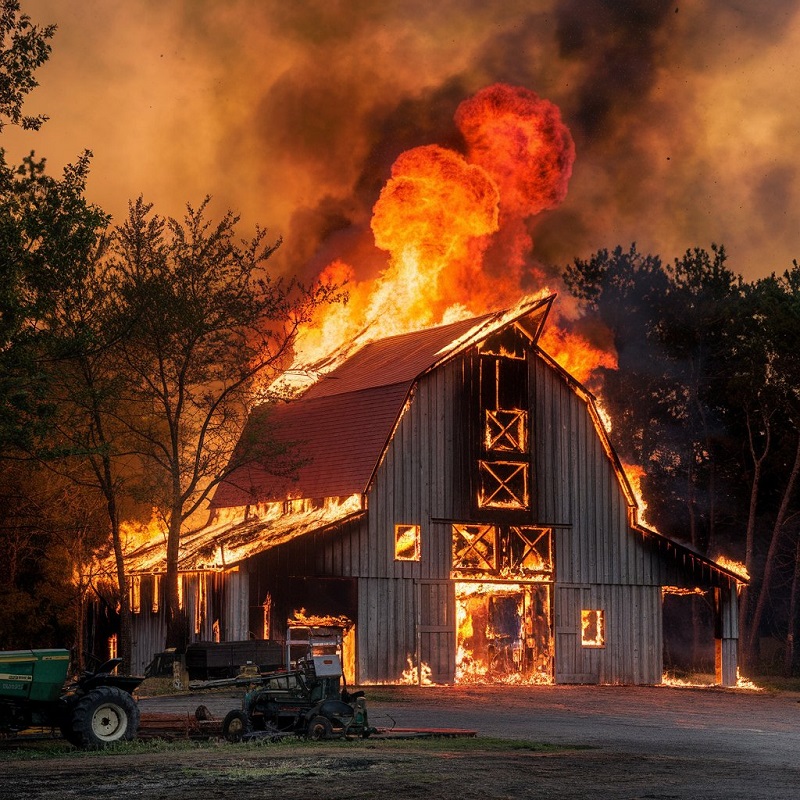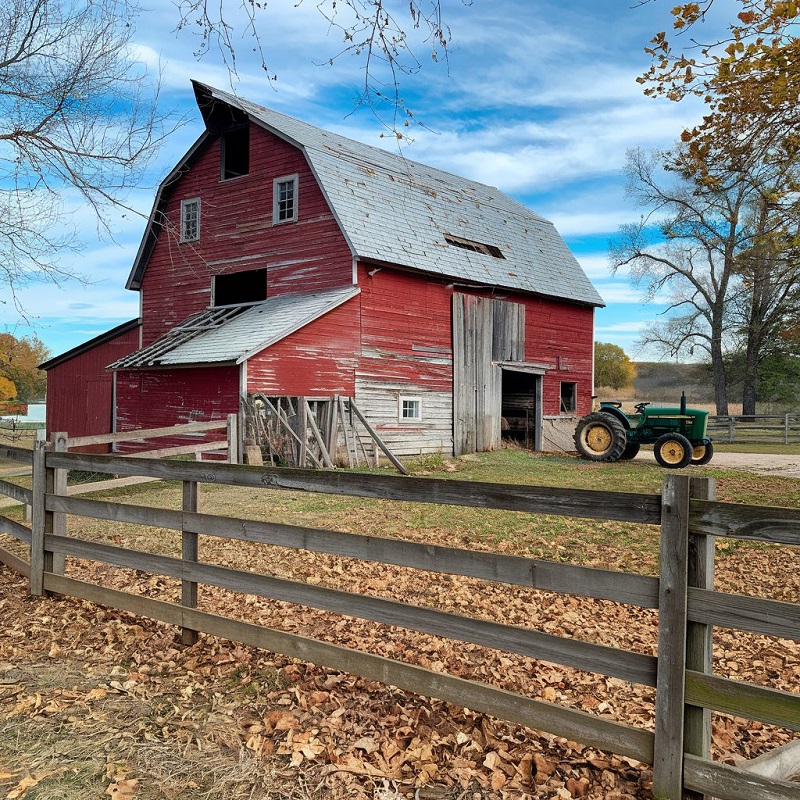Barn fires are no longer rare rural tragedies—they are becoming an alarming environmental and economic crisis, driven in large part by intensifying drought conditions linked to climate change. As barns packed with hay, livestock, and equipment turn into tinderboxes, entire communities are left grappling with devastating consequences. This article delves deep into how climate change is fueling barn fire risks, the cascading environmental impacts, and the sustainable strategies that can help mitigate future disasters.
What Is a Barn Fire?
A barn fire is the uncontrolled burning of a barn or agricultural storage facility, typically used to house livestock, store hay, or shelter machinery and tools. These fires often spread rapidly due to the flammable materials inside, such as dry hay, wood, animal bedding, and fuel.
For farmers, a barn is more than just a building—it’s the heart of the farm. It holds life, labor, and legacy. When it burns, the loss is deeply personal and often irreplaceable.
Why Do Farmers Depend on Barns So Much?
Barns are integral to farming operations:
- Animal Shelter: Protect livestock from extreme weather and predators.
- Crop Storage: House hay, grains, and straw needed to feed animals or sell.
- Equipment Security: Store tractors, plows, and irrigation tools worth thousands.
- Chemical and Supply Storage: Safely store fertilizers, medicines, and feed.
The loss of a barn doesn’t just mean lost structures—it means disruption to every part of a farmer’s livelihood.
What Causes Barn Fires? A Look at the Growing Threat
Barn fires can strike without warning, destroying decades of work in mere minutes. Understanding their root causes is the first step in crafting effective prevention strategies.
Leading Causes of Barn Fires
- Electrical Faults: Outdated wiring, overloaded circuits, and faulty equipment are among the most common culprits, especially in aging structures.
- Improper Storage: Dry hay, straw, and chemicals stored in tight, unventilated spaces can spontaneously combust or ignite from minor sparks.
- Human Error: Smoking, negligence in machinery operation, or poor fire safety habits can easily ignite a blaze.
- External Sources: Lightning, wildfires, and arson all pose significant threats—particularly in dry seasons.
According to the U.S. Fire Administration, over 20,000 barn and farm structure fires occur annually in the United States, with total damages often exceeding $100 million.
According to the USDA, barn fire incidents in drought-prone counties have increased by over 20% between 2010 and 2020. As climate variability worsens, fire-prone weather is expected to affect more than 50% of U.S. cropland by 2035.
How Climate Change and Droughts Are Fueling Barn Fires
Climate change isn’t just melting ice caps—it’s drying out our farmlands. Prolonged droughts, driven by rising global temperatures, are transforming rural regions into high-risk fire zones.
The Drought-Fire Connection
The Intergovernmental Panel on Climate Change (IPCC) warns that droughts are increasing in both frequency and severity worldwide. Drought conditions turn vegetation brittle and barns dangerously dry. In areas like the U.S. Midwest, Australia, and Southern Europe, the effects are especially stark.
- Bone-Dry Fuel: Grasses, hay, and crops become tinder, making barns susceptible to even the smallest sparks.
- Moisture-Loss in Stored Materials: Drought accelerates the drying of hay and straw, increasing the risk of spontaneous combustion.
- Overloaded Electrical Grids: Heatwaves strain power systems, elevating the chances of shorts and electrical fires.
- Encroaching Wildfires: Drought-fueled wildfires can leap to barns with ease, as seen during California’s and Australia’s historic fire seasons.
Examples of Barn Fires Caused by Drought: Case Studies
Marion County, Florida – April 2025
A devastating barn fire erupted in Reddick, consuming a 10,000-square-foot barn and killing 21 horses. The blaze, coinciding with Florida’s dry season and under below-average rainfall conditions, spread rapidly. Investigators suspect highly flammable dry hay combined with electrical failure. The fire released significant pollutants, with PM2.5 levels spiking in surrounding neighborhoods.
Florida rancher Dana Alvarez, who lost a barn and seven horses in a 2024 blaze, shared: “It happened in seconds. The hay was so dry, and by the time help came, there was nothing to save. We’re now rebuilding with metal siding and fire alarms—it’s more expensive, but peace of mind is priceless.”
California’s 2021 Fire Season
During a record-setting drought, California witnessed over 5 million acres burned. Agricultural structures—including dozens of barns—were caught in the infernos. Many barns lacked defensible space and were stocked with dry feed and wood, fueling uncontrollable blazes.
Australia’s 2019–2020 Black Summer
In one of the country’s worst fire seasons, over 46 million acres burned. Thousands of barns and sheds were destroyed. Farmers cited years of drought as the primary catalyst. Wildlife fled or perished, ecosystems were decimated, and smoke clouds reached New Zealand.
The Dangerous Climate Feedback Loop of Barn Fires
Barn fires do more than just reflect the dangers of climate change—they actively worsen it.
- Greenhouse Gas Emissions: Combustion releases CO2 and methane. One barn fire can emit the same amount of CO2 as a passenger car does in 100,000 miles.
- Rebuilding Emissions: Constructing new barns, especially with traditional materials, increases carbon output.
- Land Degradation: Post-fire landscapes lose vegetation, releasing more carbon and reducing carbon sequestration.
It’s a vicious cycle: climate change causes droughts → droughts spark barn fires → barn fires emit greenhouse gases → more climate change.
Environmental and Community Impacts
Air Quality Degradation
Smoke from barn fires contains a harmful blend of pollutants—PM2.5, carbon monoxide, benzene, and dioxins. Prolonged exposure can lead to respiratory issues in both humans and animals.
Soil and Water Pollution
Ash and chemicals from burned pesticides and plastics seep into the soil. When rains return, they wash toxins into rivers, contaminating water supplies and harming aquatic life.
Biodiversity Loss
Barn fires destroy habitats and food sources for pollinators, small mammals, and birds. Fires in agricultural zones often wipe out entire micro-ecosystems.
Economic Fallout
Beyond the destruction of property and livestock, fires disrupt supply chains, raise insurance premiums, and lead to job losses. Recovery is often long and costly.
Insurance companies are adjusting premiums for barns in high-risk zones. Farmers in drought-impacted regions report 20–30% increases in coverage costs, with some insurers requiring fire-resistant building materials or moisture monitoring systems as conditions for coverage.
Regional Hotspots for Barn Fires
- U.S. Midwest & Great Plains: Increasing droughts and aging barn infrastructure.
- Southern Europe: Spain, Italy, and Greece face summer heatwaves and poor rainfall.
- Australia: Repeated bushfire seasons threaten barns in rural and remote areas.
How to Prevent Barn Fires in a Drought-Prone World
Sustainable Farm Practices
- Fire-Safe Barn Design: Use metal roofing, concrete floors, and non-flammable insulation. Ensure vents and sprinklers are in place.
- Moisture Monitoring: Invest in hay temperature and moisture sensors.
- Electrical Inspections: Schedule regular reviews, especially during peak heat months.
- Controlled Vegetation: Maintain firebreaks—bare strips of land around barns that stop fire spread.
Smart Technology
- IoT Sensors: Detect heat spikes, electrical issues, and humidity changes in real-time.
- Solar Power: Solar systems reduce dependence on vulnerable electrical grids.
- Automated Sprinklers: These systems activate immediately upon detecting heat or smoke.
Drought-Resilient Farming
- Drip irrigation to maintain safe moisture levels.
- Drought-resistant crops to limit combustible biomass.
- Agroforestry: strategically placed trees reduce wind and create fire barriers.
Community and Government Interventions
Education and Training
- Offer workshops on drought-fire risks and sustainable practices.
- Train farm workers in safe chemical storage and emergency fire response.
Incentives and Policy Support
- Subsidies for retrofitting barns with fire-resistant materials.
- Grants for renewable energy systems and irrigation upgrades.
- Enforcement of firebreak maintenance and hay storage guidelines.
Agencies like USDA Rural Development and FEMA are offering grants for rural fire safety upgrades, including fire-resistant barn retrofits and training programs. Some states now require barn owners to submit fire risk assessments as part of agricultural permits.
Shared Resources and Preparedness
- Community water reserves for fire suppression.
- Rural fire watch networks and emergency drills.
- Shared firefighting equipment co-ops.
Recovery and Resilience After a Barn Fire
Eco-Friendly Rebuilding
- Use low-carbon cement or reclaimed wood.
- Incorporate solar panels, green roofs, and fire-resistant cladding.
Soil and Ecosystem Restoration
- Apply compost and biochar to revive soil.
- Replant native flora to stabilize land and attract pollinators.
Support for Wildlife and Farmers
- Install birdhouses, feeding stations, and native plant gardens.
- Offer mental health counseling and rebuild funds for farmers.
Conclusion: Breaking the Cycle of Barn Fires and Climate Change
Barn fires are no longer isolated disasters—they are symptoms of a planet in flux. Droughts, sparked by climate change, are making fires more frequent and intense. But we are not powerless. By adopting smart farming practices, investing in fire-resilient infrastructure, and fostering community resilience, we can stem the tide.
You can help. Support farmers who choose sustainability. Push for climate-smart agricultural policies. Share this article to raise awareness. Together, we can break the cycle—building farms, and futures, that thrive in harmony with nature.
Have thoughts or experiences to share? Leave a comment below or visit The Environmental Blog for more green insights and practical solutions.





